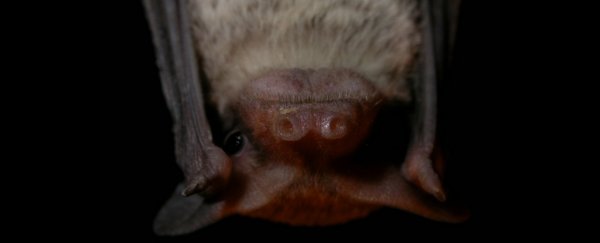There are a lot of bat species in the world today. Like, a ton of bats. We know of at least 1,400 species, and they make up around 20 percent of all current mammal species. It's the bats' world, we just live in it.
However, despite bats seemingly exploding onto the scene during the Eocene (the earliest bat fossil dates back to 52 million years ago), in a rapid diversification that has been described as "unprecedented", the bat fossil record is notoriously poor.
Any new find is incredibly valuable, helping to fill in the gaps in our understanding of their wild evolution. That's what a team of scientists led by palaeontologist Vicente Crespo of the La Plata Museum in Argentina has just found.
From the Ribesalbes-Alcora Basin in the Castellón province of Spain, the researchers have recovered the remains of ten bats - including those of a new species previously unknown to science.
"This constitutes, thus far, the first and largest collection of fossil bats from the early Miocene of the Iberian Peninsula," the team wrote in their paper.
They have named their new species Cuvierimops penalveri, in honour of palaeontologist Enrique Peñalver of the University of Valencia.
The fossil assemblage in which the bats were found dates back to over 16 million years ago, during the height of the Miocene, which ran from around 23 million to 5 million years ago. By the time the Miocene rolled around, mammals were already fairly well established; the fossil site once resembled a tropical forest, and numerous species of animals - including shrews, squirrels, dormice, hamsters and crocodiles - have been found fossilised there.
But the newly found bats are incredibly interesting, the researchers said.
 Fossilised teeth used to identify some of the bats. (Crespo et al., Earth Environ Sci Trans R Soc Edinb, 2020)
Fossilised teeth used to identify some of the bats. (Crespo et al., Earth Environ Sci Trans R Soc Edinb, 2020)
That's because, of the 10, five belong to the Molossid, or free-tailed, bat family. Today, these are abundant and highly diverse; in the Oligocene epoch, from around 34 million to 23 million years ago, they dominated the European bat scene. But from the Miocene, molossid fossils are scarce.
The new kid, C. penalveri, is one of these molossids. Its presence is even more intriguing. Of its genus, Cuvierimops, only one other species has been identified, dating back to the Oligocene at the latest. Palaeontologists thought that it must have gone extinct not long after.
Another of the molossids, Rhizomops cf. brasiliensis, marks the first recorded appearance of its genus in the Early Miocene.
And there was another special recovery - an individual of the genus Chaerephon. A number of Chaerephon species are alive today, but previously, no remains had been recovered older than about 12,000 years. Finding an individual dating back to 16 million years ago places the genus in the Lazarus bucket - species that disappear from the fossil record for a long time, only to reappear later alive and well.
The presence of so many molossids, the researchers note, confirms the ancient tropical forest interpretation of the region. Today, molossids are the most abundant and diverse in densely forested tropical areas that are also rich in squirrels, dormice, and insectivores.
Together, the new discoveries are helping us piece together a very incomplete puzzle about the history of bats.
"The richness of molossids recorded in this material reveals the high diversity attained by this group in the Miocene of Europe, which had been largely unrecognised as a result of such fossils being typically underrepresented in the .. fossil record," the researchers wrote.
"The abundance of these bats in the Ribesalbes-Alcora Basin is consistent with the presence of a tropical forest surrounding a paleolake, as suggested also by the presence of other mammal taxa such as eomyids, certain types of dormouse, and insectivores."
The research has been published in Earth and Environmental Science Transactions of the Royal Society of Edinburgh.
